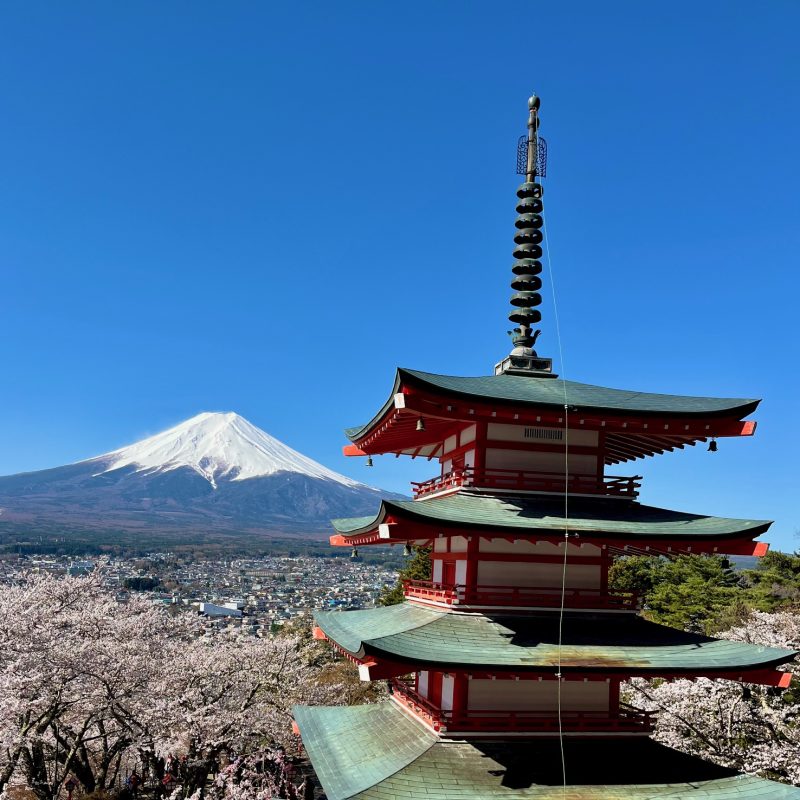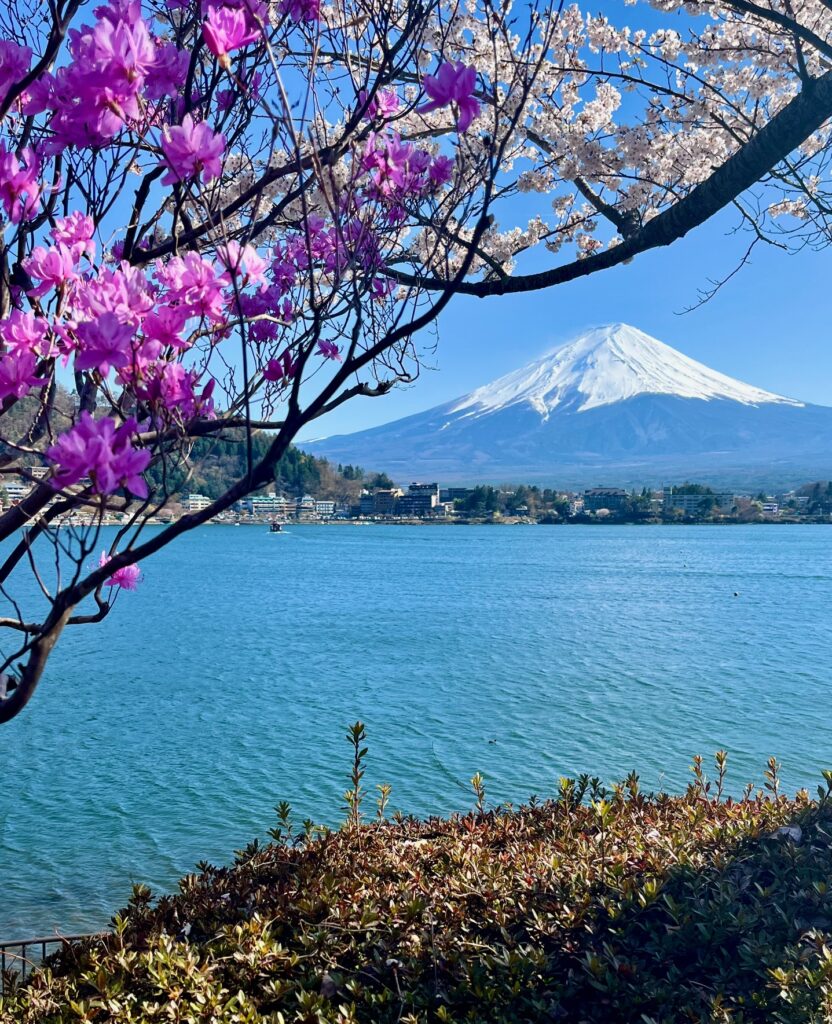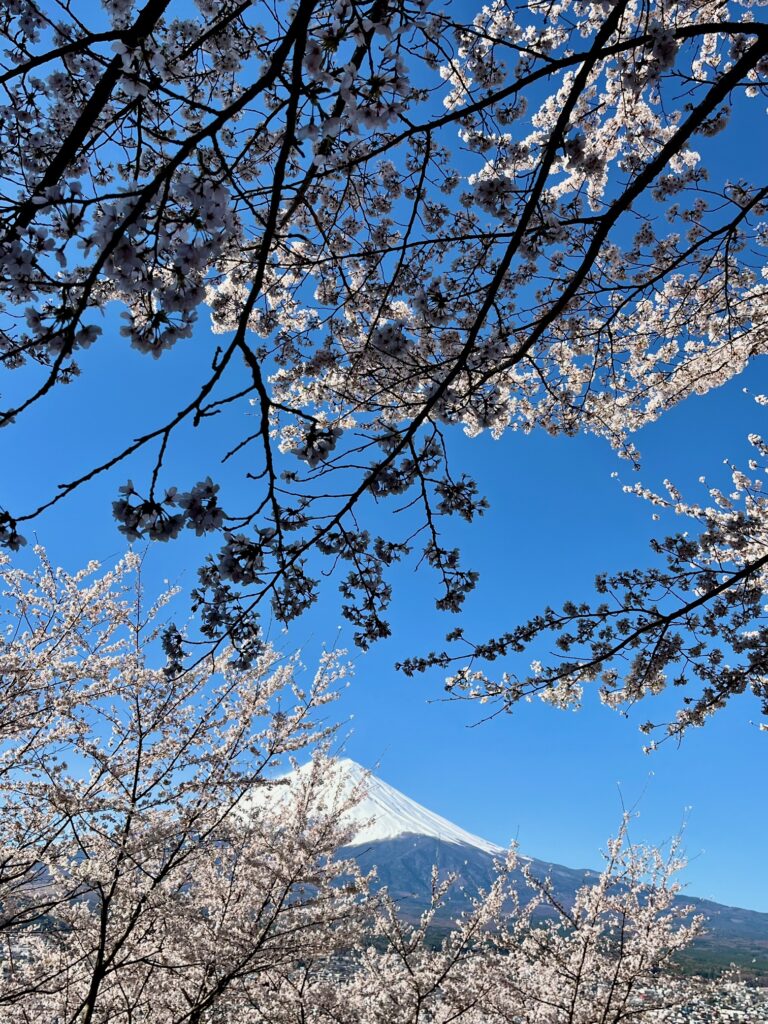Mount Fuji is one of the most iconic and beloved symbols of Japan — a nearly perfect cone rising 12,389 feet into the sky. But what many people don’t realize until they arrive is that seeing Fuji is a bit of a gift. Because it’s so often shrouded in clouds or haze, catching a clear view of the mountain feels almost like a stroke of luck. Given this was high on my “bucket list” things to see, I was pretty disappointed on the afternoon we arrived and a gigantic cloud hung perfectly over the peak. However the next morning, perfect clear blue skies!
One of the best and most popular spots to take in Fuji’s beauty is Arakurayama Sengen Park, home to the famous Chureito Pagoda. Perched on a hillside with panoramic views, this five-story red pagoda set against the backdrop of Mount Fuji is one of the most photographed spots in the country — and for good reason. The combination of historic architecture, sweeping landscape and cherry blossoms is hard to beat.


Mount Fuji is actually an active volcano, though it hasn’t erupted since 1707. That eruption, known as the Hōei eruption, deposited ash as far away as Tokyo. While it’s been quiet for centuries, Fuji remains a powerful force — geologically and spiritually — in Japanese culture.
Greg and I would love to add a climbing Mount Fuji one day. But there’s a catch: the official climbing season is incredibly short, typically only from early July to early September, when the trails are clear of snow and mountain huts are open (it’s possible to climb now, but way too much snow for us). For now, we’re settling on hiking from below, but hopefully someday!


